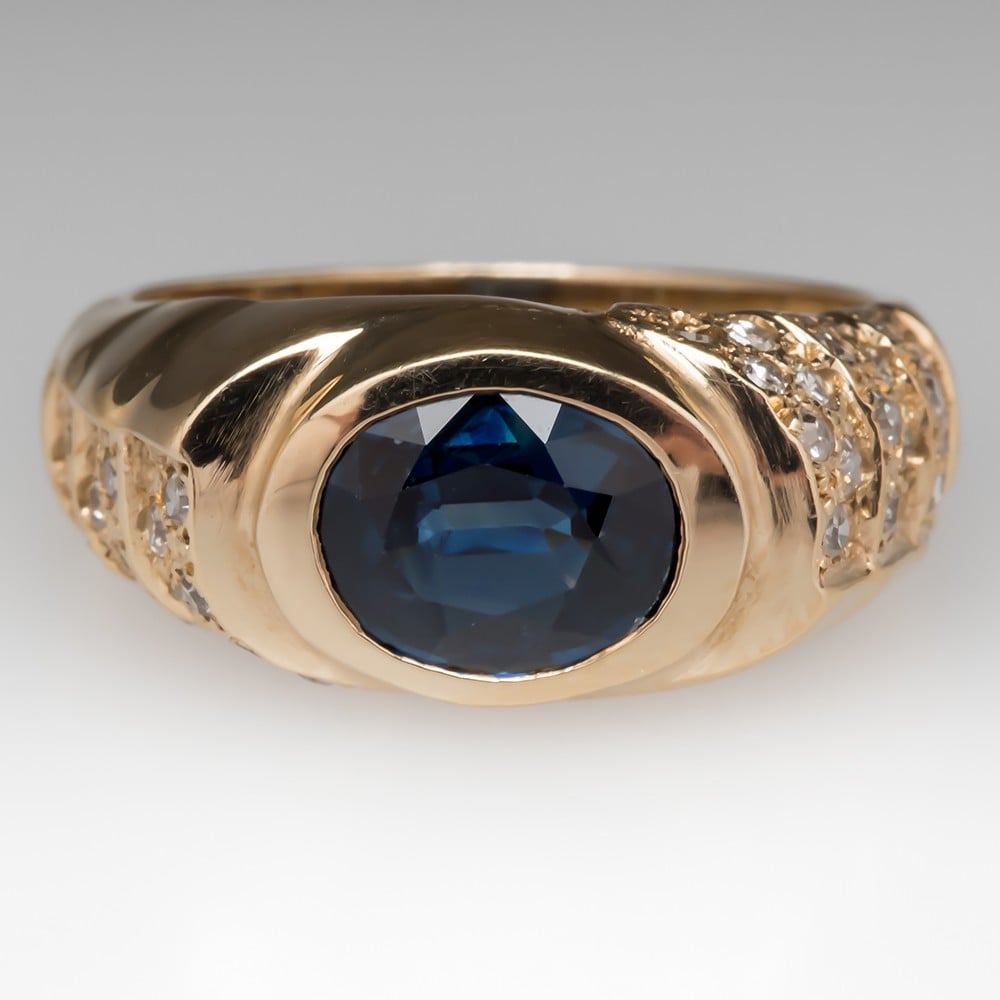
Posted in: Birthstones
 Blue sapphires have captivated the human race since they were first discovered ages ago. Ancient Persians believed the entire world rested upon a pedestal made of a blue sapphire, which gave the sky its beautiful color. Named sapphirus by the Greeks, this magnificent blue gemstone enjoys distinction as one of the most celebrated gemstones in the world.
Blue sapphires have captivated the human race since they were first discovered ages ago. Ancient Persians believed the entire world rested upon a pedestal made of a blue sapphire, which gave the sky its beautiful color. Named sapphirus by the Greeks, this magnificent blue gemstone enjoys distinction as one of the most celebrated gemstones in the world.
The Origin of Blue Sapphires
According to Edwin A. Streeter, writing in the 1800s, blue sapphires originated in Persia. (source) However, more recent archaeological evidence traces them to Sri Lanka (Ceylon). (source) Formed within the Earth's crust and then thrust thousands of miles up by plate tectonics, most sapphire ore resides in our planet's highest mountain ranges. Given the hardness of sapphire, prying it from the earth remains difficult. However, thanks to its hardiness, sapphire most typically winds up in placer deposits in riverbeds. (source) Broken free by torrential rains and water erosion, chunks of sapphire flow down the sides of mountains and wind up mixed up with river rocks. The earliest finds wound up in the hands of merchants traveling along the established trade routes running throughout the Middle East. Eventually, blue sapphires become the most coveted gemstones of Persia, Greece, and Rome. (source) Over time, they reached nearly every country in Europe, and into Asia, as well. Their hardness made them difficult to work with, so most early specimens were lightly polished into the first cabochons. (source) Eventually, lapidarists learned to use diamond dust to drill holes into them, allowing for beaded jewels and pendants.
The Stone of Royals & Nobles
Given their rarity and importance, blue sapphires remained exclusive to kings and nobles. The wealthiest members of Ancient Greek and Roman societies carried or wore blue sapphire amulets to protect against envy and physical harm. (source) In Greek lore, a blue star sapphire became legendary for lending its beauty to Helen of Troy. (source) And in the Jewish histories, King Solomon wore a blue sapphire seal-ring, which was closely associated with descriptions of God's floor, which was also made of blue sapphire. (source) As time marched on, blue sapphires took on magical and mystical powers. Powers to heal and powers to connect people to the gods.
Mystical Magical Blue Sapphires
The Greeks dedicated blue sapphire to the god Apollo, believing that the beautiful blue gems granted them favorable responses from their beloved deity. (source) This connection to Apollo eventually grew into a broader application. Many mystics believed that blue sapphires magically opened the third eye, an energy center associated with seers and visionaries. These early mystics used sapphires to divine the future through oracles. Later, witches and sorcerers began using blue sapphire to enhance their magic. Meanwhile, ancients believed that blue sapphire also provided curative powers for physical ailments. Healers reportedly ground up sapphires into a powder and gave it to their patients to alleviate eye ailments, digestive issues, inflammatory conditions, and even mental illness. Modern scholars believe that much of this curative lore pertained to lapis-lazuli rather than sapphire. (source) Regardless, blue sapphires enjoy a rich history of magic, mystery, and importance. ~Angela Magnotti Andrews4 years ago
13 view(s) 